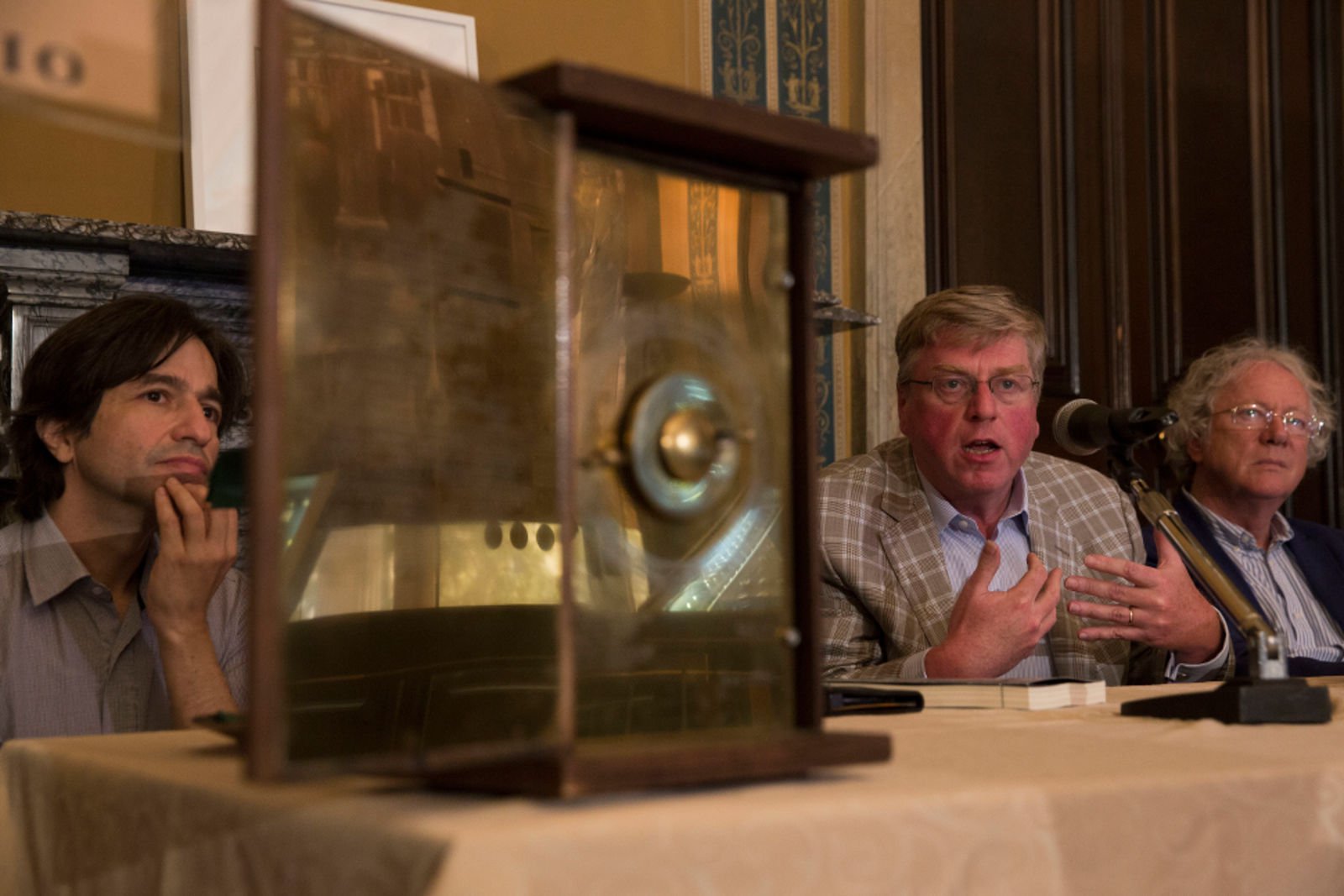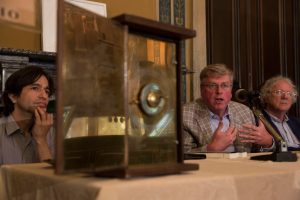If you follow developments in archaeological study of ancient Mediterranean cultures you’re likely familiar with the excitement surrounding the so-called “Antikythera mechanism.” Originally discovered by Greek divers over 100 years ago, it appeared to be a mere concretion – a jumble of probably unrelated artifacts formed into a solid aggregate by natural processes. One archaeologist at the time, Valerios Stais, noted a piece of metal that appeared to be a gear and hypothesized that the jumble had been an astronomical clock of some sort; this was a minority opinion. Some 50 years later other researchers echoed this theory based ont the machinery visible on the surface of the lump. Now, a full century after its original discovery, modern imagining technology has allowed archaeologist to fully scan all the fragile components contained in the lump and recreate the mechanism. Most recently, advancements in imaging technology has allowed researchers to distinguish and writing on housing that fully described its workings and applications. Several work models, both physical and virtual have been created and filmed and you can view these, along with the full news story here:
Instruction Manual for Antikythera mechanism Discovered


